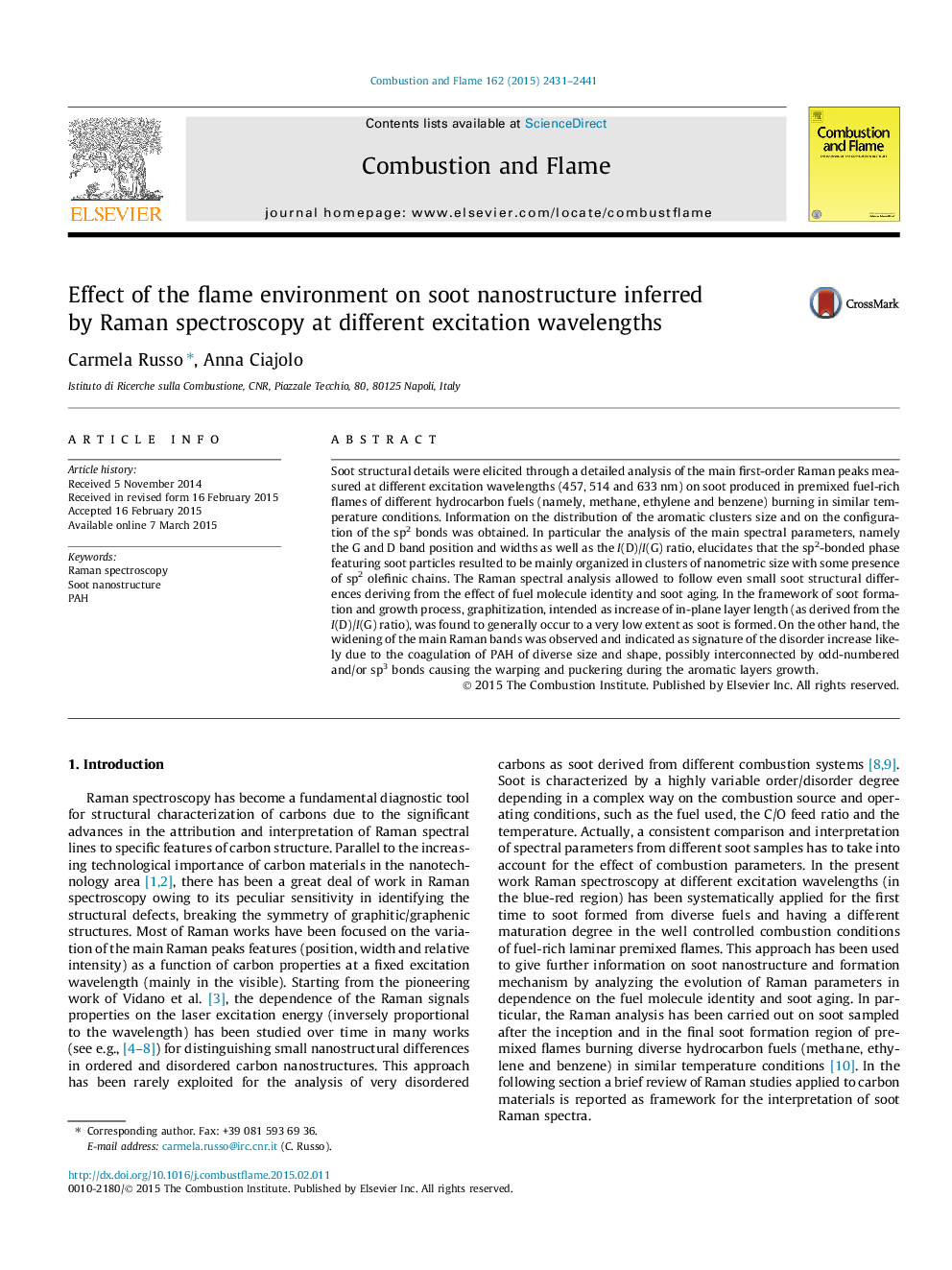| Article ID | Journal | Published Year | Pages | File Type |
|---|---|---|---|---|
| 166276 | Combustion and Flame | 2015 | 11 Pages |
Soot structural details were elicited through a detailed analysis of the main first-order Raman peaks measured at different excitation wavelengths (457, 514 and 633 nm) on soot produced in premixed fuel-rich flames of different hydrocarbon fuels (namely, methane, ethylene and benzene) burning in similar temperature conditions. Information on the distribution of the aromatic clusters size and on the configuration of the sp2 bonds was obtained. In particular the analysis of the main spectral parameters, namely the G and D band position and widths as well as the I(D)/I(G) ratio, elucidates that the sp2-bonded phase featuring soot particles resulted to be mainly organized in clusters of nanometric size with some presence of sp2 olefinic chains. The Raman spectral analysis allowed to follow even small soot structural differences deriving from the effect of fuel molecule identity and soot aging. In the framework of soot formation and growth process, graphitization, intended as increase of in-plane layer length (as derived from the I(D)/I(G) ratio), was found to generally occur to a very low extent as soot is formed. On the other hand, the widening of the main Raman bands was observed and indicated as signature of the disorder increase likely due to the coagulation of PAH of diverse size and shape, possibly interconnected by odd-numbered and/or sp3 bonds causing the warping and puckering during the aromatic layers growth.
